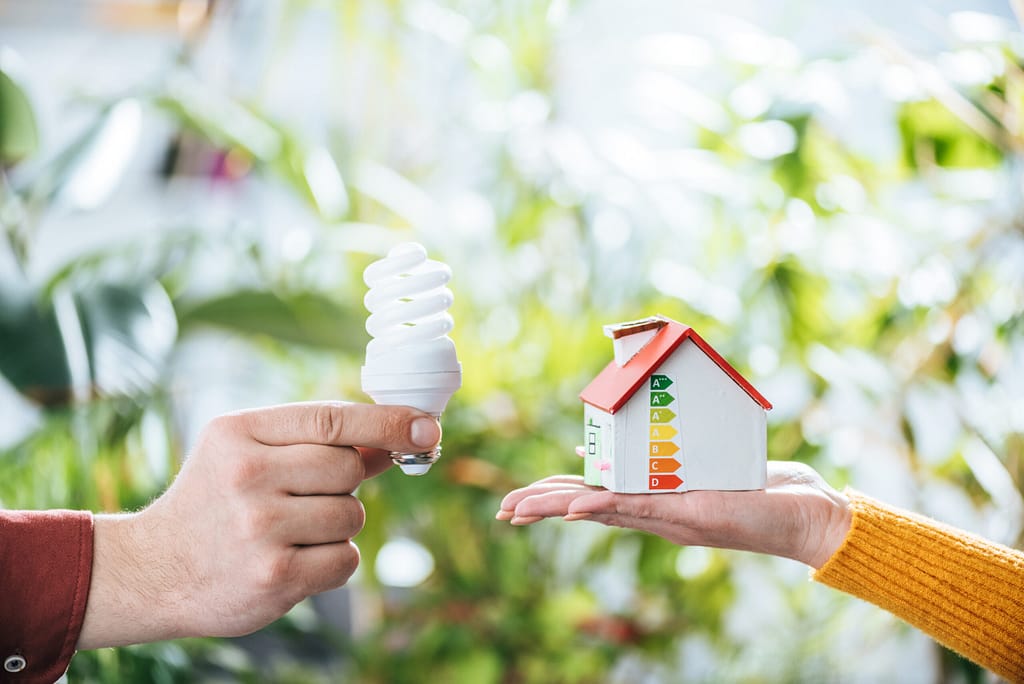If you haven’t noticed, the summer heat is here! This time of year our home HVAC systems are working hard to keep you comfortable. Unfortunately, the heat also means some of the biggest utility bills of the year. Record-breaking heat combined with rising utility costs, inflation, and a global climate crisis, families are trying to save every penny they can. Luckily there are some easy things you can do to make your home more efficient, and lower your power bills.
“You can start by checking your home’s water heater temperature. Most water heaters are set to about 120 degrees Fahrenheit, which is the perfect temperature for bathing. However, turning it down to 110-degrees Fahrenheit saves around 5% on energy costs.” says Chris Hill. “You can also close your kitchen and bathroom vents when you’re not using them. You might also install a programmable thermostat to give you more control over your thermostat adjustments.” He adds “It’s important to know that the programmable thermostats also track your savings, which is another valuable incentive.” Ultimately, he says, small changes can have a big impact.
What are the benefits of energy efficient appliances?
Energy efficiency is a popular topic in the building industry. Maintaining Just go to any home show, and you will see sales people pushing the latest and greatest in home energy efficiency gadgets. There’s so much noise it can be hard to separate fact from myth. Building efficiency standards have been moving up for years. The highest energy efficiency standards are in place for energy-efficiency-rated new buildings and for existing buildings undergoing renovation, and likewise, energy efficient products like windows, doors and appliances occupy a larger portion of project budgets than in the past. Costs might include the up-front costs of implementing energy efficiency strategies, as well as the maintenance costs. Benefits can be difficult to quantify, but energy efficiency investments ultimately save on lower energy costs (anywhere from 5 to 15% savings annually), reduced maintenance on appliances, decreased greenhouse gas emissions, and reduced pollution. With the benefits most likely outweighing the cost, we believe implementing energy efficiency strategies is a smart investment. Besides, who doesn’t like saving a few bucks on the utility bill every month?
How much money do energy efficient homes save?
Let’s dive into the research. According to the federal government’s ENERGY STAR® program:
- The average American family spends over $3,000 a year on power costs. The average total energy savings of each “Energy Star” home is around 10% which equals out to:
- $300 per year when using 10% less energy with the right appliances
- To make you home energy-efficient, you’ll need:
- Well-maintained energy efficient appliances
- A well-maintained electric or gas meter
- An efficient and updated heating and cooling (HVAC) system
- A well-maintained energy controller (or a computer that responds to a manual signal and sends an electric or gas usage demand signal to your furnace or air conditioner)
- A well-maintained water heater that uses less than 1,000 BTU per hour
- Properly installed and maintained indoor air quality systems
- Properly installed and maintained insulation (especially in attics and crawl spaces)
- Properly installed and maintained windows and doors (with proper sealing and weather stripping)
- High efficiency insulation
- Fresh weather sealing around doors and windows
But before you run out and start buying new appliances, you need to find out what areas of your home are most (and least) efficient. By doing a home energy assessment you can gain a better understanding of where your home loses heat, what parts of your house to renovate first, and why certains areas of your home might stay hot. Thermal imaging is a key tool for identifying problem areas.
Home Energy Assessments

Thermal imaging is a technique that is now readily available to homeowners. It’s a good way to discover new areas of potential energy savings, spot faulty parts on home equipment, and make informed decisions regarding your home’s energy profile.
For example, can you improve the amount of insulation you put into the attic? Is your furnace operating optimally? What areas of your house lose the most heat? When homeowners want a more sustainable life, but don’t know where to start, it is time to call a professional who can help you create a plan. By using thermal imaging, a professional can visualize your home’s temperature profile. Likewise, thermal imaging can be used to identify faulty parts on your home HVAC system, for example. It’s kind of like having x-ray vision!
Despite easy access to the latest technologies, the average American’s home is one of the least efficient in the world. Be that as it may, as much as 10% of national energy consumption was wasted in the USA in 2014, with 2% of power coming from natural gas and 1% from propane. That’s a lot of wasted energy. That also means there’s a ton of opportunity to save money. Every dollar of savings you find will pay for itself many times over in energy and tax savings in the long run. That’s a major return on investment.
If you really want to go all out to reduce your utility bills at home, thermal imaging is one way to tell where you’re losing the greatest amount of energy.
At the end of the day, optimizing your home can pay for itself many times. Whether through reduced maintenance costs, increased property values, lower bills, or reduced pollution home energy efficiency is a great investment.
SCHEDULE AN HVAC SYSTEM INSPECTION TODAY!
Find out if your heating and air conditioning system is ready for the summer before it’s too late. American Mechanical offers dependable HVAC inspections, service and repair, thermal imaging, and maintenance services throughout Wyandotte, Johnson and Leavenworth counties in Kansas and Cass, Clay, Jackson, and Platte Counties in Missouri.
For help maintaining your building comfort all year long, ask about our conveniently priced maintenance plans.




You must be logged in to post a comment.